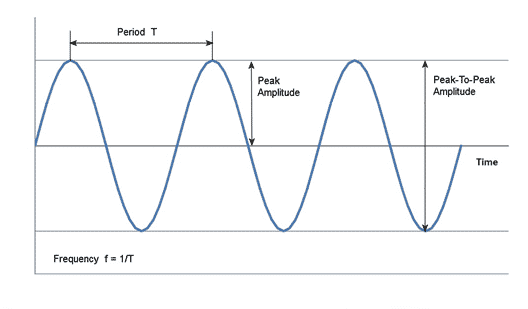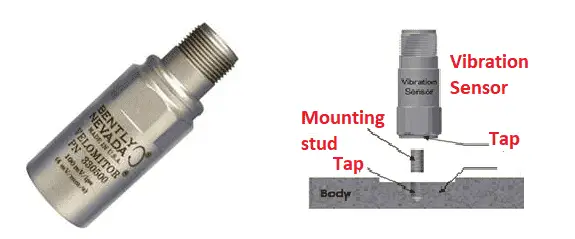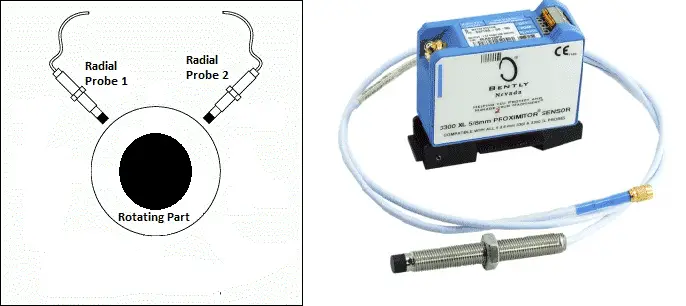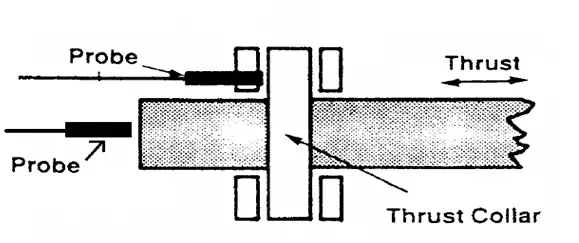Vibrations are the unwanted oscillations or say mechanical movement of any equipment or machine or its subparts due to any kind of imbalance. The vibrations exist in compressors, pumps, turbines, and other rotating equipment or machine and connected axillaries
It is desirable that the vibrations must be as minimum as possible. However, due to the law of nature, we cannot create a perfect system. And, there exist vibrations when the machine runs.
Characteristics of Vibrations
We can characterize vibrations into three main parameters.
1. Amplitude of Vibration
Amplitude as the name says it’s simply how severe the vibration is. In other words, it tells us the actual magnitude of the vibration. If the amplitude of vibration is more, it may cause more damage to equipment or machine. Further, this may cause a catastrophic failure. Thus, it is important to know the magnitude of the vibrations.
Amplitude can be expressed in terms of peak amplitude or peak to peak amplitude or root mean square amplitude. Peak to peak amplitude is the maximum amplitude from showing the difference between a positive peak and a negative peak. Peak amplitude shows the highest amplitude the equipment or machine has observed from zero point.

The root means square is the average of the vibration amplitudes of the machine. The vibration is sinusoidal in nature and the average value of the sinusoidal waveform is zero. Therefore, the direct averaging will result in zero vibration.
Common units of amplitude are inch/second or millimeter/second
2. Frequency of Vibration
vibrations occur continuously in the system. Thus frequency is nothing but the parameter which tells us how fast these vibrations occur. The rate at which any given equipment or machine is oscillating or vibrating is the frequency of vibration.
Even the low-magnitude high-frequency vibration can cause damage to the equipment or machine.
If the frequency of vibration matches the resonance frequency of the machine, then it is vulnerable to the machine.
3. Phase of Vibration
Phase is the shifting of continuously occurring vibrations in equipment or machine from one start point to another. The phase term is usually used when vibrations of two or more equipment or machine or parts are compared.
Common Causes for Vibration
- Improper installation of any equipment or machine-like compressor or pump or turbine can cause vibrations and that is why the surface for installation is verified and made balanced even before installing any equipment or machine. Also balancing equipment or machine is a must after installing equipment or machine.
- Improper alignment between the driving equipment or machine and the driven equipment or machine can cause damage to both sides because of high vibrations due to the imbalance created during movement. Alignment imbalance can happen over a period of time due to various factors and also during the installation of the equipment or machine.
- Worn-out parts like bearing, coupling, or gears of the equipment or machine can cause vibrations which can further damage other parts which are in motion.
- Loose parts which are moving can cause vibrations and even damage other stationary parts also.
Vibration Measurement
Mechanical type vibration switches also detect the vibration but as the name says mechanical vibration switch, we cannot fully rely upon them for critical equipment or machines.
We measure the three types of vibrations for accurate vibration measurement.
Full body vibration
- Full body vibration is suitable for small but critical pumps, motors, gearboxes, or any other rotating equipment or machines. The most common application is vibration measurement in cooling tower fans’ gearbox and motor vibration measurement.
- For measuring full body vibration, we mount a velocity meter or accelerometer on the rotating equipment or machines
- This type of vibration measurement is also called contact type vibration measurement because the vibration sensor is attached to the body and vibrated along with the body.

Radial Vibration
- Radial vibrations measurement is done for rotating parts such as shafts of the compressor.
- Generally, we use 2 proximity probes for measuring the radial vibration.
- Both radial vibration probes are installed at 90 degree from each other to detect the perfect vibration movement,

Axial Vibration
- Axial vibration measurement plays a very important role in saving the equipment or machine from wearing out.
- We install axial vibration probes for measuring the shaft or thrust collar’s linear movement (to and fro movement).

- We install a single axial vibration probe for each shaft or thrust collar.
- The axial movement can be positive and negative with respect to a zero position which is in the center of the whole movement or technically called float of the machine.
- The types of probes used for axial measurement are the same probes we use for radial vibration measurement.
Read Next: